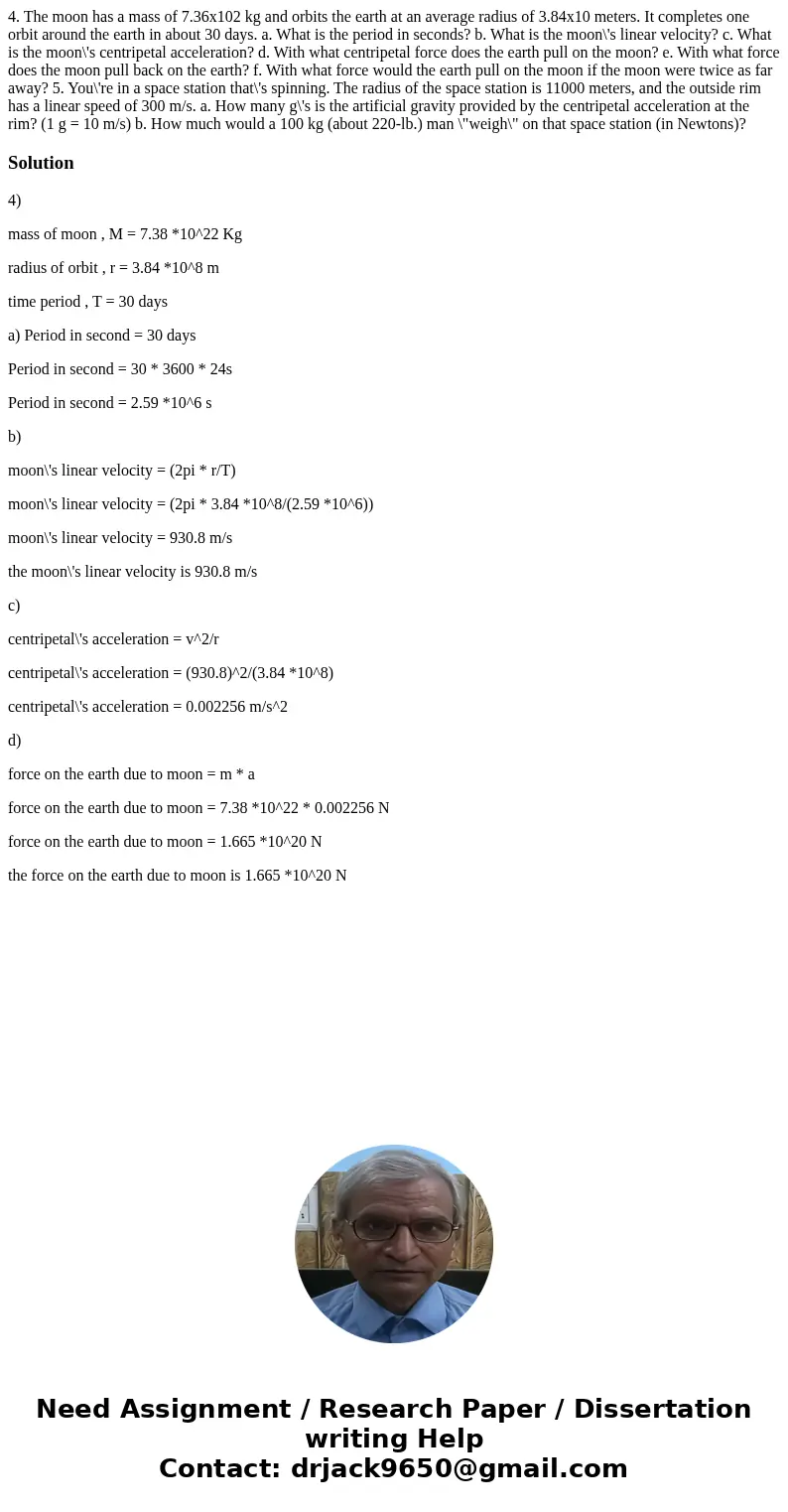4 The moon has a mass of 736x102 kg and orbits the earth at
4. The moon has a mass of 7.36x102 kg and orbits the earth at an average radius of 3.84x10 meters. It completes one orbit around the earth in about 30 days. a. What is the period in seconds? b. What is the moon\'s linear velocity? c. What is the moon\'s centripetal acceleration? d. With what centripetal force does the earth pull on the moon? e. With what force does the moon pull back on the earth? f. With what force would the earth pull on the moon if the moon were twice as far away? 5. You\'re in a space station that\'s spinning. The radius of the space station is 11000 meters, and the outside rim has a linear speed of 300 m/s. a. How many g\'s is the artificial gravity provided by the centripetal acceleration at the rim? (1 g = 10 m/s) b. How much would a 100 kg (about 220-lb.) man \"weigh\" on that space station (in Newtons)? 
Solution
4)
mass of moon , M = 7.38 *10^22 Kg
radius of orbit , r = 3.84 *10^8 m
time period , T = 30 days
a) Period in second = 30 days
Period in second = 30 * 3600 * 24s
Period in second = 2.59 *10^6 s
b)
moon\'s linear velocity = (2pi * r/T)
moon\'s linear velocity = (2pi * 3.84 *10^8/(2.59 *10^6))
moon\'s linear velocity = 930.8 m/s
the moon\'s linear velocity is 930.8 m/s
c)
centripetal\'s acceleration = v^2/r
centripetal\'s acceleration = (930.8)^2/(3.84 *10^8)
centripetal\'s acceleration = 0.002256 m/s^2
d)
force on the earth due to moon = m * a
force on the earth due to moon = 7.38 *10^22 * 0.002256 N
force on the earth due to moon = 1.665 *10^20 N
the force on the earth due to moon is 1.665 *10^20 N

 Homework Sourse
Homework Sourse